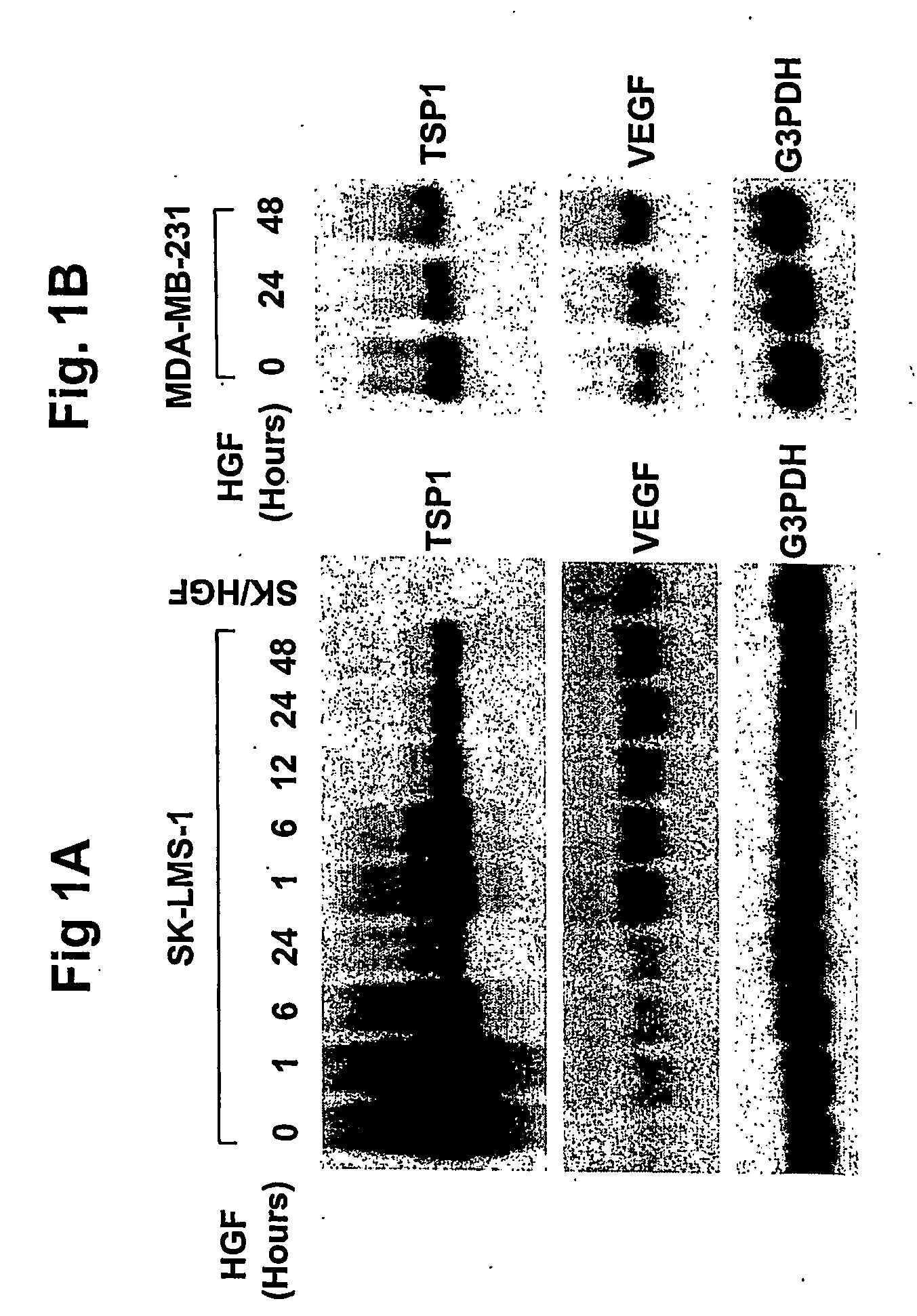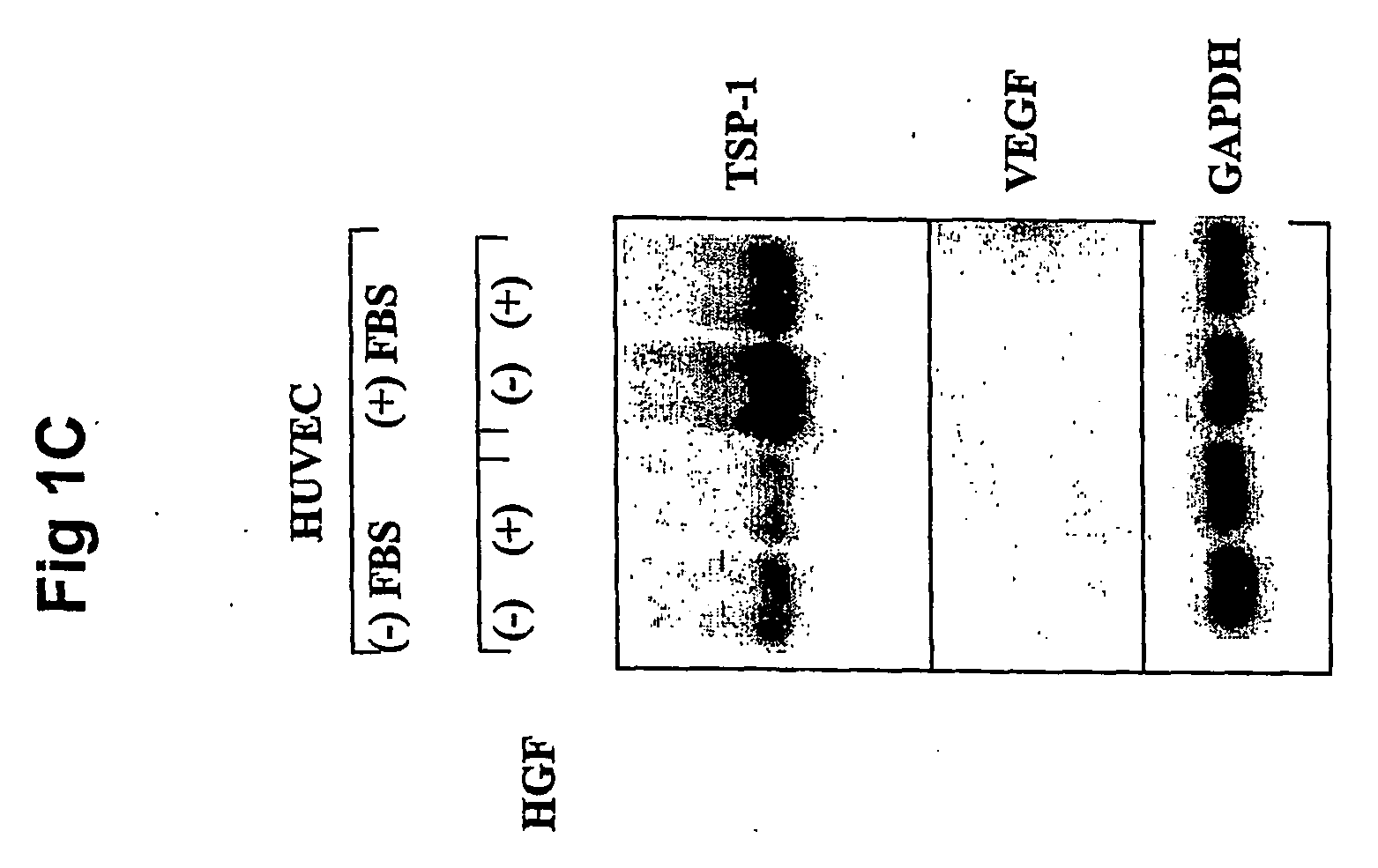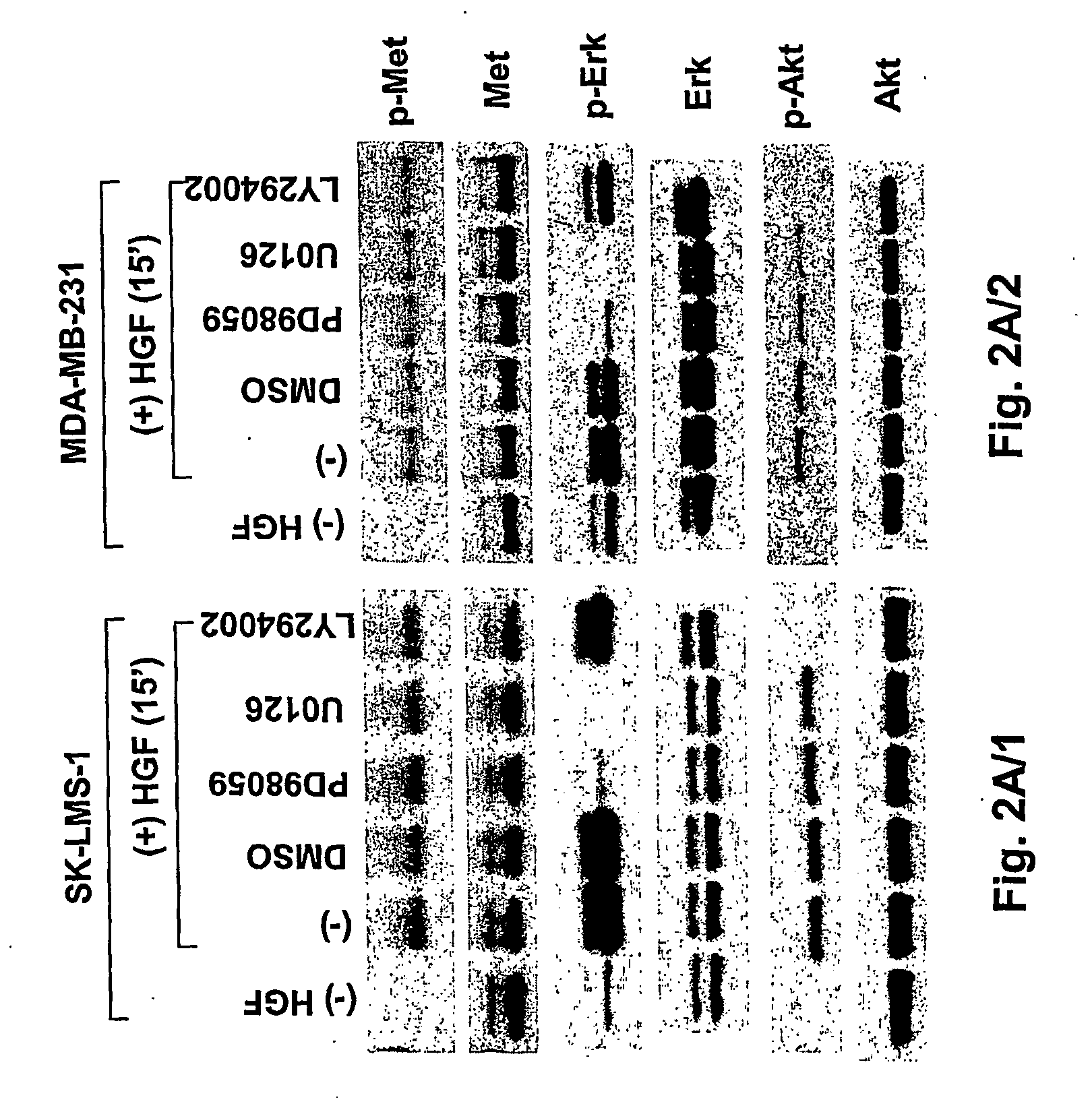Inhibition of tumor angiogenesis by combination of thrombospondin-1 and inhibitors of vascular endothelial growth factor
- Summary
- Abstract
- Description
- Claims
- Application Information
AI Technical Summary
Benefits of technology
Problems solved by technology
Method used
Image
Examples
example i
VEGF Induction and TSP-1 Inhibition in Tumor Cells
[0241] From gene expression analysis studies performed on a human leiomyosarcoma cell line (SK-LMS-1) (data not shown), the present inventors found that VEGF expression increased after HGF / SF treatment as previously reported for other tumor cells lines (13, 14). The present inventors performed Northern analysis on SK-LMS-1 cells and showed that HGF / SF treatment induced VEGF and expression persisted for as long as it was measured, up to 48 hours (FIG. 1A). VEGF was also elevated in long term cultures of SK-LMS-1 cells autocrine for HGF / SF (SK / HGF, 15) (FIG. 1A). The present inventors also examined MDA-MB-231 cells, a human breast cancer cell line, (FIG. 1B) and, as with SK-LMS-1, after HGF / SF treatment, the levels of VEGF increased and persisted for 48 hours. In gene expression studies, the present inventors also observed that the anti-angiogenic factor, TSP-1, decreased in response to HGF / SF stimulation and the present inventors obs...
example ii
MAP Kinase Inhibitors Block VEGF Induction and TSP-1 Down-Regulation
[0242] HGF / SF, acting through its tyrosine kinase receptor, Met, is known to activate several intracellular signaling pathways, including MAP kinase, PI3 kinase and Stat3 (1, 16). The present inventors asked which pathways might be involved in regulating VEGF and TSP-1 expression. The present inventors treated SK-LMS-1 and MDA-MB-231 cells with (or without) various inhibitors for one hour, followed by HGF / SF stimulation for 15 minutes (FIGS. 2A / 1 and 2A / 2). Met receptor is tyrosine-phosphorylated in response to HGF / SF, followed by the activation of downstream targets of Erk p44 / 42 MAPK) and Akt / PI3 kinase. MAP kinase specific inhibitors PD98059 or U0126 blocked the activation of Erk, while the PI3 kinase specific inhibitor LY294002 blocked Akt activation (FIG. 2A / 1-2A / 2). RNA samples from SK-LMS-1 and MDA-MB-231 cells treated with individual inhibitors followed by HGF / SF treatment for 24 hours were analyzed by Nort...
example iii
TSP-1 Overexpression Inhibits Tumor Cell Growth via anti Angiogenic Effects
[0246] The next study tested whether down-regulation of TSP-1 by HGF / SF had any biological effect on HGF / SF-induced tumor growth. TSP-1 was overexpressed in SK / HGF cells to generate SK / HGF-TSP1 cells (FIG. 3A). Overexpression of TSP-1 has no effect on cell proliferation or anchorage-independent growth compared the parental SK / HGF cells in vitro (FIGS. 5A-5B). To test whether TSP-1 influences tumorigenicity, the present inventors SK / HGF and SK / HGF-TSP1 cells were subcutaneously implanted in athymic nude mice, and their tumor growth rates were compared. At early times, no growth differences were observed between the SK / HGF and SK / HGF-TSP1 groups. However, when the tumors grew to a certain size, differences between became more apparent (Student's t test p<0.025). HGF / SF-dependent tumor growth was partially inhibited by TSP-1 overexpression (FIGS. 3B 3C). TSP-1 protein expression was confirmed in the SK / HGF-TSP1...
PUM
| Property | Measurement | Unit |
|---|---|---|
| Composition | aaaaa | aaaaa |
| Therapeutic | aaaaa | aaaaa |
Abstract
Description
Claims
Application Information
 Login to View More
Login to View More - R&D
- Intellectual Property
- Life Sciences
- Materials
- Tech Scout
- Unparalleled Data Quality
- Higher Quality Content
- 60% Fewer Hallucinations
Browse by: Latest US Patents, China's latest patents, Technical Efficacy Thesaurus, Application Domain, Technology Topic, Popular Technical Reports.
© 2025 PatSnap. All rights reserved.Legal|Privacy policy|Modern Slavery Act Transparency Statement|Sitemap|About US| Contact US: help@patsnap.com



